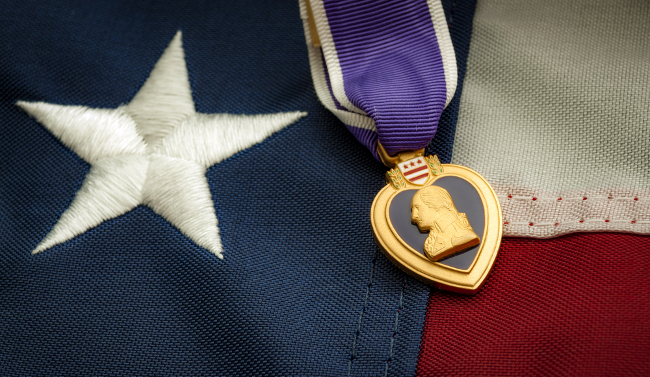
Purple Hearts are a mainstay of war movies and political discussions. But while we’ll often hear about earning one, nobody bothers to explain how that happens. How do you earn a Purple Heart, and why is it so important to members of the military?
At its most basic level, a Purple Heart is a medal awarded to soldiers who are injured in the course of combat, either directly by the enemy or indirectly by the actions of the enemy. A soldier who gets into a car wreck on a military base in peace time wouldn’t qualify for the Purple Heart, but one who gets in a wreck while under fire by enemy combatants might. The Purple Heart is so esteemed as a medal in part because it’s closely tied to the history of serving in the military. As a military award, it has its roots in the very beginning of the United States armed forces. Called the Award of Military Merit, only three were issued, by George Washington himself, and those three were given the right to award it as they saw fit.
The medal as we know it, however, really first became possible to receive in 1932, and by 1942, it became available for every branch of the armed services and even available to civilians until 1997. Hence part of the reason it’s so closely tied to World War II, as many Americans, soldiers and otherwise, saw enemy fire. It’s currently believed that roughly 1.8 million Purple Hearts have been issued, although efforts to find the exact number are still ongoing. And you can win multiple Purple Hearts, as well; this is generally denoted with either oak leaf clusters or stars on the medal.
The Purple Heart is the rare medal that you don’t have to be commended for, but rather have issued automatically after you meet the criteria. Contrary to popular belief, they’re not just handed out. You can serve a long and noble career in the armed forces, even see combat, and never come remotely close to qualifying for a Purple Heart. Even after meeting the criteria, it’s still issued at the discretion of the chain of command. And, all too often, it’s an award that’s issued posthumously.
The Purple Heart is, essentially, an acknowledgement that serving in the armed forces carries with it, at every moment, an element of risk and sacrifice. It also quantifies, for many, what a “true” injury in the course of fighting for your country is; in 2010, NPR reported on soldiers denied Purple Hearts because concussions weren’t considered “true” injuries, something the military revised in 2012.
In the end, the Purple Heart is tangible proof that they’ve put themselves on the line for their country, and for some, it remains the sole memento of a family member who joined to serve and didn’t return. It’s a mark of respect, not lightly given, and we should always remember it as such.
